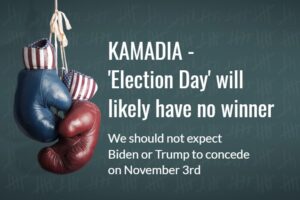By Anna Massoglia and Karl Evers-Hillstrom, Center for Responsive Politics
Digital advertising is becoming more popular for presidential candidates and major political groups, even as social media platforms grapple with how best to regulate political ads.
Presidential candidates have spent $105 million on digital ads since big tech platforms and social media giants started tracking them last year. Of that total, more than $67 million has been spent on Facebook while $32 million went to Google.
Twitter, which recently announced it will stop allowing political ads as of Nov. 15, was always the least popular platform of the big three. Presidential candidates spent less than $5.2 million on Twitter and the biggest online advertiser, President Donald Trump, never ran an ad on the platform.
Digital ads are a crucial tool for campaigns to build their lists of potential donors and try to attract small-dollar contributions. Campaigns often look to capitalize on current events, such as the impeachment inquiry, to rake in campaign cash.
OpenSecrets’ presidential profile pages now display how much money candidates and their allied outside groups are spending on Google ads. The new feature, which integrates data from Google’s political ad database, will enable users to filter through thousands of ads and ad track spending by week going into the 2020 election.
Trump is the top spender on Google ads, shelling out $12 million with more than $1 million of that spent in a single week of September after House Democrats announced the impeachment inquiry.
Trump is by far the top 2020 spender on digital ads overall, too. Billionaire investor Tom Steyer is a distant second with $13.4 million and South Bend, Ind., Mayor Pete Buttigieg comes in third at $9.3 million. After spending big on digital ads to kick-start his campaign, former Vice President Joe Biden has fallen behind his Democratic primary opponents in the digital ad race.
Ad campaigns that were once reserved for television are making their way onto social media platforms. Sens. Elizabeth Warren (D-Mass.) and Bernie Sanders (I-Vt.) are both running television-style video ads on Google to appeal to voters in early primary states. Sen. Kamala Harris (D-Calif.) is reportedly planning a digital ad blitz to reach Iowa voters in an attempt to revitalize her struggling campaign.
Outside groups are big digital ad spenders, too. Democratic super PAC Priorities USA has spent millions of dollars on Facebook to hit Trump on trade and the economy, and the group recently announced a new digital effort to woo Latinx voters in battleground states. Meanwhile, pro-Trump “dark money” group American Action Network launched a $2 million digital issue ad campaign to target swing district Democrats over impeachment.
Facebook and Google are still the platforms of choice for candidates and outside groups, and those platforms may see a slight uptick in spending when Twitter’s political ad ban goes into effect.
Twitter’s political ad ban prompted questions about what ads it will consider to be “political.” The platform is expected to still allow groups to run ads related to issues of national significance, but not ads that advocate for a candidate or bill, Buzzfeed News reported. Twitter will reveal its new policy Nov. 15.
Facebook, which has come under fire for not doing more to regulate political ads, is reportedly considering restricting politicians’ ability to narrowly target specific users with ads. Federal Election Commission Chairwoman Ellen Weintraub argued in a recent opinion piece that platforms should abolish microtargeting rather than ban political ads.
Digital advertising has become more transparent in recent years, with four major social media platforms, including Snapchat, disclosing information about political advertising.
Platforms such as Hulu, Pandora, Reddit and Spotify currently allow political advertising but have not publicly released data on those ads or implemented any public disclosure policies.
Amazon, Bing, LinkedIn, Pinterest, Twitch and TikTok’s policies include significant restrictions or complete bans on political advertising. But even those platforms haven’t completely stopped candidates and groups from exploiting loopholes to promote political messages.
Less than eight weeks after Snap Inc. launched its ad database, spending on political ads targeting the U.S. more than quadrupled — ballooning from roughly $600,000 to nearly $2.8 million, according to an OpenSecrets analysis.
Candidates in the 2020 presidential election have spent just $232,825 on Snapchat ads. Although that number is dwarfed by other platforms, political ad spending on Snapchat has continued to grow rapidly.
Buttiegeig is the first candidate to spend more than six figures on Snapchat, ramping up his Snap spending from $6,750 when the ad database launched to more than $119,000. Trump nearly doubled his Snapchat ad spending to roughly $80,000 in that time. Harris and Warren continued spending moderately on Snapchat while Biden’s campaign made its inaugural Snapchat ad buys totaling $1,175.
By Anna Massoglia and Karl Evers-Hillstrom, Center for Responsive Politics
Note: The views expressed in this article are the author/s, and not the position of Intellectual Dose, or iDose (its online publication). This article is republished with permission.



